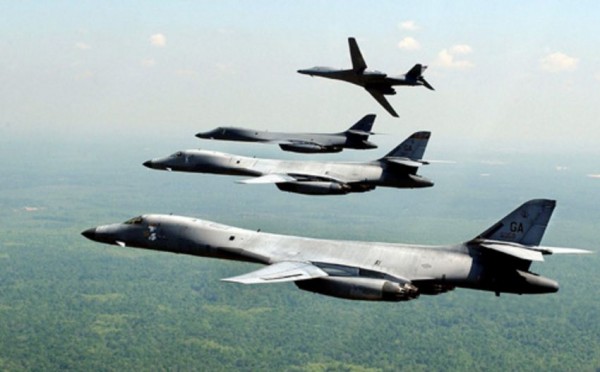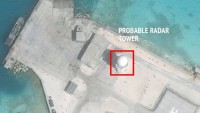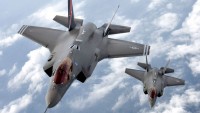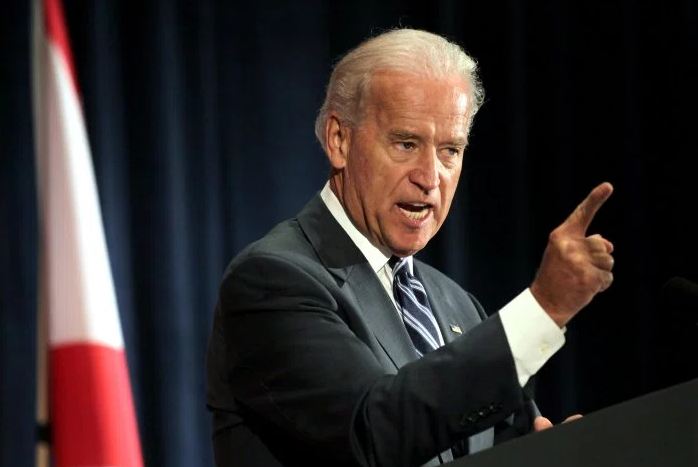US Deploys B-1B Supersonic Bombers to Guam to Patrol Asia
| Arthur Dominic Villasanta | | Aug 01, 2016 06:01 AM EDT |
(Photo : USAF) U.S. Air Force B-1 Lancers in formation.
The United States continues to position more of its military might to Asia with the deployment of an unknown number of its Rockwell B-1B Lancer supersonic heavy strategic bombers to Guam for long-range patrols extending up to South Korea.
This is the first time in 10 years this U.S. Air Force swing-wing supersonic bomber has been stationed in Guam, an indication of the high level of tension between the United States and China. Deploying the B-1Bs to the Pacific will also send a signal to North Korea that its nuclear and missile threats are being resolutely opposed.
Like Us on Facebook
The bomber, which has the largest internal payload of any U.S. bomber and can fly at speeds of up to Mach 1.25 (1,335 km/h), will be based at Andersen Air Force Base on Aug. 6 along with 300 airmen from Ellsworth Air Force Base in South Dakota.
The Lancers will replace B-52 bombers from Minot Air Force Base in North Dakota that have been on Guam as part of the United States Pacific Command's continuous bomber presence mission.
Pacific Air Forces (PACAF), which is a part of the United States Pacific Command, said the Lancers "will provide a significant rapid global strike capability that enables our readiness and commitment to deterrence, offers assurance to our allies and strengthens regional security and stability."
PACAF said that with "a large weapon capacity and exceptional standoff strike capability, the B-1 will provide the U.S. Pacific Command and its regional allies and partners with a credible, strategic power projection platform."
The deployment of this strategic bomber optimized for devastating low-level attacks is the United States' reply to China's announcement it was increasing its air and sea patrols of the disputed South China Sea. This follows a ruling by an international tribunal that declared illegal China's claim to own this body of water based on "historic rights."
Two U.S Navy aircraft carrier groups, each with a Nimitiz-class nuclear supercarrier at its core, currently patrol the South China Sea. The U.S. has also stationed four U.S. Navy EA-18G Growler electronic warfare aircraft at Clark Air Base in the Philippines to keep tabs on the Chinese.
The B-1Bs are expected to challenge China should this country unilaterally impose an air defense identification zone (ADIZ) as it has threatened to following its humiliating loss to the Philippines at the Permanent Court of Arbitration in The Hague.
The B-1B has a maximum internal weapons payload of 75,000 lb and maximum external weapons payload of 59,000 lbs.
It can carry 24 GBU-31 Joint Direct Attack Munitions (JDAM) at one time. Instead of this, it can also mount a combination of 24 Mk 84 2,000 lb. general purpose bombs; eight Mk 65 naval mines; 84 Mk 82 500 lb. general purpose bombs; 84 Mk 62 500 lb. naval mines; 30 CBU-87, -89, -97 cluster munitions; 30 CBU-103, -104, -105 wind-corrected munitions dispensor (WCMD); 24 AGM-158 joint air-to-surface stand-off missiles (JASSM) or 12 AGM-154 joint stand-off weapons (JSOW).
TagsB-1B Lancer, Guam, Andersen Air Force Base, Pacific Air Forces, United States Pacific Command, Philippines
©2015 Chinatopix All rights reserved. Do not reproduce without permission
EDITOR'S PICKS
-

Did the Trump administration just announce plans for a trade war with ‘hostile’ China and Russia?
-

US Senate passes Taiwan travel bill slammed by China
-

As Yan Sihong’s family grieves, here are other Chinese students who went missing abroad. Some have never been found
-

Beijing blasts Western critics who ‘smear China’ with the term sharp power
-

China Envoy Seeks to Defuse Tensions With U.S. as a Trade War Brews
-

Singapore's Deputy PM Provides Bitcoin Vote of Confidence Amid China's Blanket Bans
-

China warns investors over risks in overseas virtual currency trading
-

Chinese government most trustworthy: survey
-

Kashima Antlers On Course For Back-To-Back Titles
MOST POPULAR
LATEST NEWS
Zhou Yongkang: China's Former Security Chief Sentenced to Life in Prison

China's former Chief of the Ministry of Public Security, Zhou Yongkang, has been given a life sentence after he was found guilty of abusing his office, bribery and deliberately ... Full Article
TRENDING STORY

China Pork Prices Expected to Stabilize As The Supplies Recover

Elephone P9000 Smartphone is now on Sale on Amazon India

There's a Big Chance Cliffhangers Won't Still Be Resolved When Grey's Anatomy Season 13 Returns

Supreme Court Ruled on Samsung vs Apple Dispute for Patent Infringement

Microsoft Surface Pro 5 Rumors and Release Date: What is the Latest?














